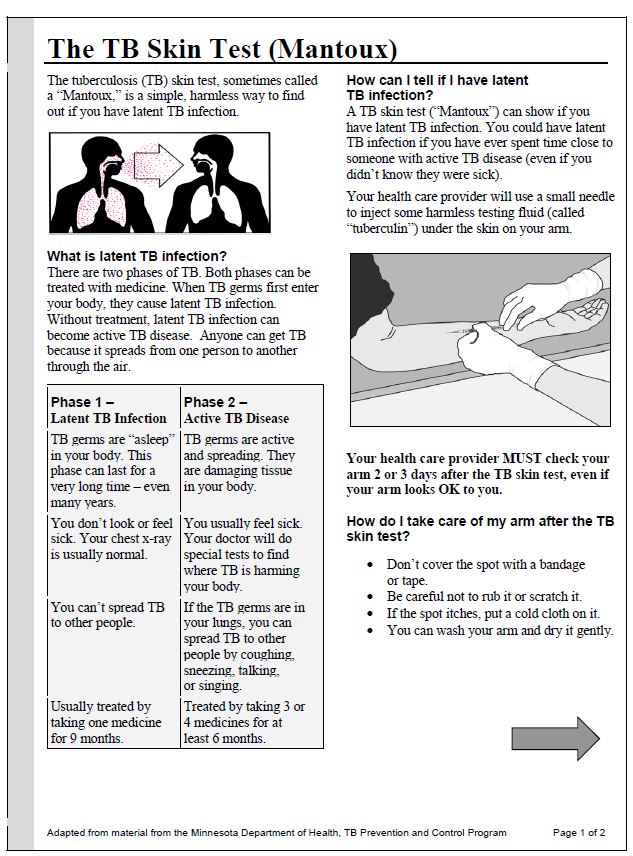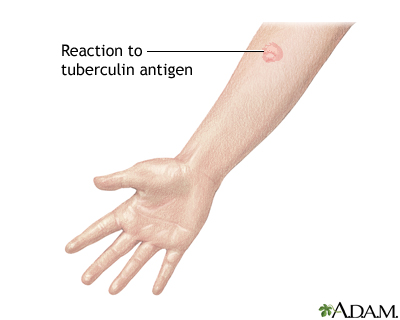

The test gets a little more specific in unique situations. Not everyone has a typical immune response.

A health care worker must have medical knowledge and the right clinical experience to diagnose TB.
Arm negative tb test skin#
This glue upon the skin causes inflammation of the skin (contact dermatitis), which may have nothing to do with the underlying PPD injection. It’s quite common to have redness (Erythema) around the PPD injection site or to have an allergic reaction to the glue in the tape.
Arm negative tb test professional#
If blisters are present on that person’s arm, the medical professional needs to determine if it’s an allergic reaction to the protein (hypersensitivity) or a true positive result. Sometimes the PPD is read as positive because of skin inflammation. Testing for TB infection may generate a false-positive result in people who got the BCG vaccine when they were younger.

Be sure to answer all your doctor’s questions honestly so they can read your test results accurately. People undergoing chemotherapy treatments, who have the AIDS virus, or who use steroids can experience a false-negative result. However, factors, such as viral infections, vaccinations, certain diseases, or medications, could generate a false-negative or false-positive result for a Tuberculin skin test. If there’s no induration present at the site of the test, you most likely don’t have TB. False-negative and false-positive TB skin test If this induration is greater than or equal to 10 mm, the testing result is positive. For a healthy person who has a normal immune system, a hard pea-sized swelling develops under the skin. Your previous health-related issues and your lifestyle can both affect your positive reading. Indurations (size of skin reaction) that indicate a positive Purified Protein Derivative test looks different for different kinds of people. It’s important to talk to your doctor immediately after a positive PPD skin test result to get a treatment plan in place. Unchecked, TB can also affect other parts of your body including the kidneys, spine, and brain. Chest pain, especially while breathing or coughing.Coughing up blood or blood-tinged sputum.Typically, TB bacteria need a lot of oxygen, so they prefer living inside lung tissue where fresh oxygen is always available. Active TBĪctive TB means that the bacteria started dividing and growing inside your tissues. Although it isn’t an infectious disease, it can turn into active TB at any time, so it’s still important to keep an eye on it. According to the Mayo Clinic, about 2 billion people in the world have latent TB.

Latent TB means that you have a TB infection but the bacteria aren’t active and causing symptoms yet. This latent TB phase can last days, weeks, months, or years. They can go undetected for years and they multiply ever so slowly, thus, evading detection from your body’s troops. Tuberculosis bacteria get inside your body and immediately go into hiding, living inside the very cells that fight infections – the white cells. It’s good to think of Latent TB as being a sleeper cell of a terrorist bacteria called Mycobacterium Tuberculosis. It’s important to remember that not all latent TB infections will become active. Interferon-gamma release assays (IGRA) or TB blood tests specifically check if you have TB bacteria in your body, but won’t determine if you’re an active or latent type. There are two types of TB disease: latent and active. The TB skin test (TST), which is performed using the Mantoux method, is the most commonly used test in the United States for diagnosing Tuberculosis.


 0 kommentar(er)
0 kommentar(er)
